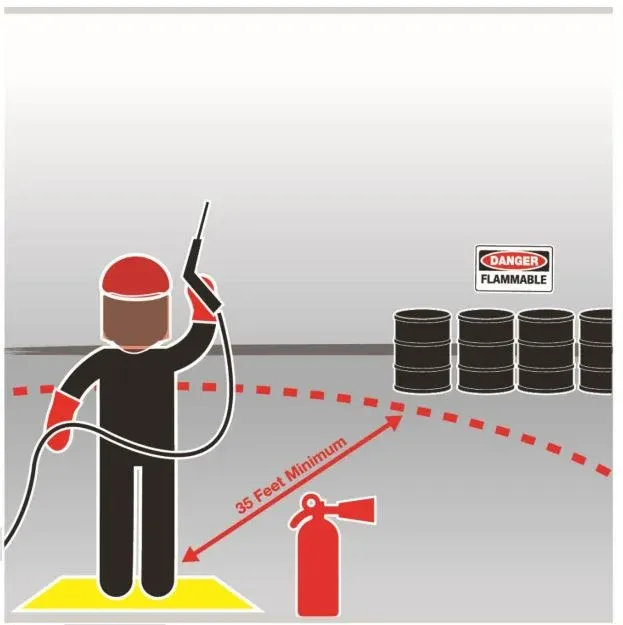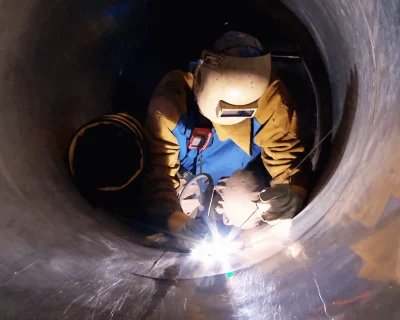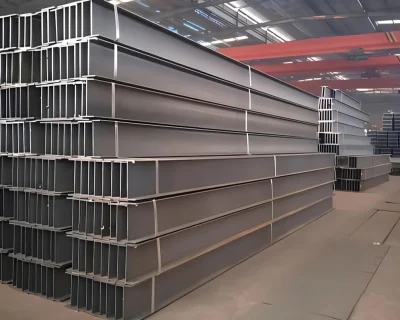
Welding Safety: Eliminating Fire Hazards from Flammable Materials (WeldSafe Essentials 2)
Welding produces intense heat, bright arcs, and showers of molten sparks—beautiful to watch from a distance, but a recipe for disaster if flammable materials are nearby. In our second installment of the WeldSafe Essentials series, we tackle one of the most preventable yet devastating risks in welding: fires and explosions triggered by combustible substances in the work area. A single spark landing on oil-soaked rags or wood shavings can ignite a blaze in seconds. Let’s explore how to identify, remove, and control these hazards to keep your workspace safe. For confined spaces, please check the previous article.
The Hidden Dangers Lurking Around Your Weld
Every welding process—MIG, TIG, stick, or plasma—generates spatter (tiny droplets of molten metal) and sparks that can travel up to 35 feet (10 meters) from the arc. These projectiles reach temperatures exceeding 2,500°F (1,370°C), hot enough to ignite almost any combustible material on contact. Common culprits include:
- Oils and greases: Hydraulic fluid, cutting oil, or lubricant residue on machinery.
- Paper and cardboard: Packaging, blueprints, or temporary coverings.
- Fabrics: Rags, clothing, curtains, or insulation batting.
- Wood and sawdust: Shavings, pallets, or structural timber.
- Chemicals: Paints, solvents, adhesives, or aerosol cans.
Even materials you might not consider flammable—such as dusty concrete or rusted metal—can combust under the right conditions. In confined or cluttered shops, a small fire can escalate into an inferno or trigger an explosion if vapors accumulate.
Statistics from the National Fire Protection Association (NFPA) paint a sobering picture: welding and cutting account for roughly 4% of all structure fires in industrial settings, but they cause disproportionate damage due to rapid spread and secondary explosions. The cost? Lost equipment, halted production, injuries, and sometimes fatalities—all avoidable with proper housekeeping.
Step-by-Step Fire Prevention Protocol
Turning a potential firetrap into a safe welding zone is straightforward if you follow a systematic approach. Here’s your checklist:
1. Conduct a 35-Foot (10-Meter) Sweep
Before striking an arc, clear a minimum 35-foot radius around the weld area of all combustible materials. This “hot work zone” accounts for the maximum travel distance of sparks under normal conditions.
- Remove: Relocate flammable items to a designated storage area.
- Cover: If removal isn’t feasible (e.g., wooden floors), shield with fire-resistant blankets, metal sheets, or welding curtains rated for 1,000°F+.
- Clean: Sweep away dust, debris, and oily residues. Use industrial vacuums for fine particles—brooms can scatter them.

2. Inspect for Hidden Combustibles
Look beyond the obvious:
- Cracks and gaps: Sparks can lodge in floor cracks or wall seams.
- Overhead areas: Check beams, pipes, and ceilings for dust accumulation.
- Adjacent rooms: Ensure no flammable vapors can migrate through vents or open doors.
3. Implement Fire-Watch Procedures
OSHA and NFPA 51B mandate a fire watch during and after hot work:
- During welding: Assign a trained observer equipped with a fire extinguisher (minimum 10-lb ABC dry chemical).
- Post-welding: Monitor the area for at least 30 minutes (longer for high-risk jobs) to catch smoldering fires.
4. Use Spark-Containment Tools
Modern accessories minimize stray spatter:
- Anti-spatter sprays or gels on base metals.
- Magnetic spark deflectors and portable welding screens.
- Slag trays or catchment mats under the workpiece.
5. Prepare Emergency Response
- Keep fully charged, inspected fire extinguishers within arm’s reach.
- Ensure clear paths to exits and functioning smoke detectors.
- Train the team on PASS (Pull, Aim, Squeeze, Sweep) technique and evacuation routes.
Real-World Scenarios and Solutions
| Scenario | Risk | Solution |
|---|---|---|
| Welding near a hydraulic press leaking oil | Oil vapors ignite | Degrease the area with approved solvents; use drip pans. |
| Repairing a wooden scaffold platform | Wood shavings catch fire | Wet down the wood or cover with fire blanket; vacuum debris. |
| Cutting steel in a paint booth | Solvent fumes explode | Purge the booth with explosion-proof ventilation; postpone until dry. |
Legal and Insurance Implications
Failure to control flammables isn’t just dangerous—it’s costly. Insurance providers often deny claims if hot work permits or fire watches are missing. In the U.S., OSHA can levy fines up to $156,259 per willful violation (2023 adjusted rates). A single incident can also trigger lawsuits, workers’ compensation claims, and reputational damage.
Quick Reference: Flammable Materials Checklist
- Oils/greases removed or contained
- Paper/cardboard relocated
- Fabrics/rags stored in metal bins
- Wood/dust swept or vacuumed
- 35-ft hot work zone cleared
- Fire-resistant covers in place
- Fire watch assigned & equipped
- Extinguishers inspected (tag current)
Print this checklist and laminate it next to your welding station—consistency saves lives.
A Clean Shop is a Safe Shop
Removing or shielding flammable materials isn’t optional; it’s the foundation of welding fire safety. By treating every spark as a potential ignition source and enforcing a rigorous clear-and-cover routine, you protect yourself, your team, and your facility. Check our serial posts for welding safety.




